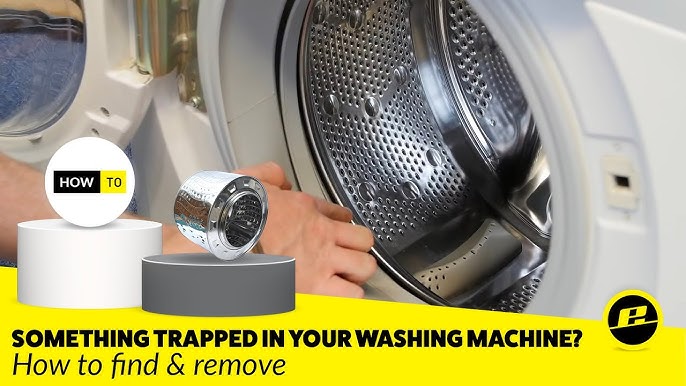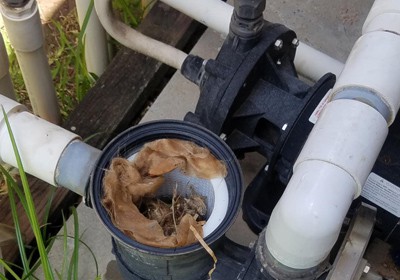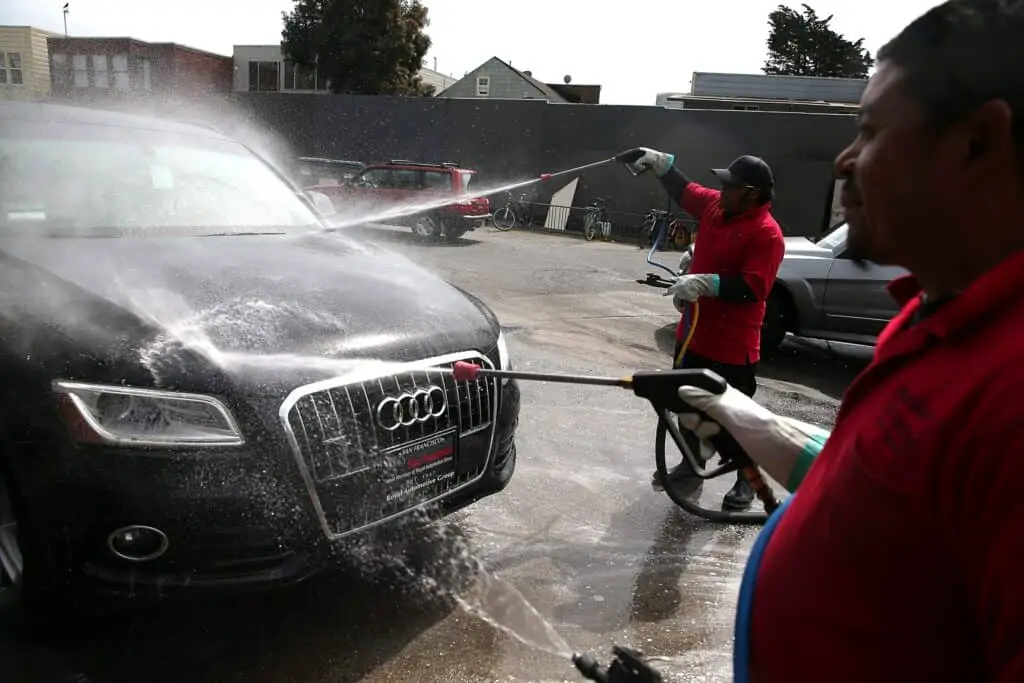A loose drum in a washing machine can indicate worn bearings or suspension. To fix it, a professional inspection and repair are necessary.
Dealing with a washing machine drum that seems to wobble or spin unevenly can be quite frustrating. It’s not only a sign that something’s amiss but could also lead to bigger issues down the line if not addressed promptly. A stable drum is crucial for the smooth operation of your washing machine, ensuring your clothes come out clean and the machine itself remains in good working order.
As such, pinpointing the cause of the looseness is essential. Whether due to normal wear and tear or a specific malfunction, understanding the root of the problem is the first step in getting your appliance back to its best. With a focus on maintaining the longevity of your washing machine, addressing a loose drum early will save you time and money, keeping your laundry routine uninterrupted.
Credit: www.espares.co.uk
Identifying The Problem
When your washing machine drum seems out of sync, it’s crucial to pinpoint the issue. A loose drum can cause laundry mishaps and damage your machine. Let’s dive into the symptoms and safety steps for a thorough inspection.
Symptoms Of A Loose Drum
Loud noises and unusual movements can signal a loose drum in your washing machine. Look out for these tell-tale signs:
- Thumping or banging sounds during the spin cycle.
- Excessive vibration, making the machine shift its position.
- Drum spinning unevenly or wobbling when you turn it by hand.
- Metallic scraping noise, hinting at internal components hitting each other.
If you notice any of these symptoms, it’s time for a closer look. But first, safety is key.
Safety Precautions Before Inspection
Before inspecting your washing machine, follow these safety steps:
- Unplug the machine to prevent electrical hazards.
- Turn off the water supply to avoid leaks and spills.
- Empty the drum of any laundry and water.
- Keep tools handy for a smooth inspection process.
With these precautions in place, you can safely investigate the cause of a loose drum.
Common Causes Of Drum Looseness
Common Causes of Drum Looseness in a washing machine can lead to noisy cycles and poor laundry results. Identifying the root cause is essential for a fix. Below, we explore three main culprits behind a wobbly drum.
Worn Out Bearings
Bearings are crucial for smooth drum operations. Over time, they can wear out. Signs include a grinding noise during spins and a drum that moves too freely.
Faulty Drum Spider
The drum spider holds the drum in place. A crack or break can cause looseness. Look for visible damage or excessive movement when you spin the drum by hand.
Damaged Suspension Springs
Suspension springs absorb vibrations. If they’re damaged, the drum can drop and become loose. Check for broken or dislodged springs inside the machine cabinet.
Diy Vs. Professional Repair
Discovering a loose drum in your washing machine can be alarming. Your next step is crucial and often boils down to a choice: tackle it yourself or bring in a pro? Understanding the intricacies of DIY versus professional repair can save time and money while ensuring your appliance runs safely and efficiently.
Assessing Repair Complexity
Identifying the issue with your washing machine’s drum is the first step. Simple problems like a loose bolt or an unbalanced load are often DIY fixes. Grab your toolbox, and you might just resolve the issue with a quick turn of a wrench or by adjusting the load. But, when the problem seems more complex, like a malfunctioning motor or suspension springs, the repair difficulty escalates.
- Check your user manual for troubleshooting tips.
- Look for online guides specific to your washing machine model.
- Assess your skill level and comfort with appliance repair.
When To Call A Technician
When the drum issue persists despite your best efforts, it’s time to call a technician. Complex repairs often require specialized tools and knowledge. A professional can safely handle these situations:
- Electrical problems that could cause harm.
- Internal component failure, such as a broken drum spider.
- Warranty concerns, to avoid voiding coverage.
Professional technicians bring expertise and can quickly diagnose the problem. They ensure your washing machine gets back to its best performance without risking further damage.
| Issue | DIY Repair | Professional Repair |
|---|---|---|
| Unbalanced Load | Possible | Not Necessary |
| Loose Bolt | Possible | Optional |
| Broken Suspension | Not Advised | Recommended |
Remember, safety comes first. If you’re unsure, seek a technician’s help. They can fix the drum and prevent future issues.

Credit: m.youtube.com
Preparation Steps For Repair
Before diving into the repair of a loose drum in your washing machine, it is crucial to prepare. Proper preparation ensures a safe and efficient fix. Follow these steps to get ready for the task at hand.
Gathering Necessary Tools
Start by collecting all the tools needed for the job. This will save time and frustration during the repair process. Here’s a list of common tools:
- Screwdrivers: Both Phillips and flat-head
- Wrench set: To tackle various bolt sizes
- Torx head screwdriver: For specialized screws
- Socket wrench: For drum bolts
- Work gloves: To protect your hands
- Flashlight: To illuminate dark areas
Securing The Work Area
Ensure the area is safe for working on your washing machine. Clear the space and secure the machine:
- Unplug the machine: Safety first!
- Move it away from the wall: To access the back panel
- Clear the floor: Remove any obstacles
- Lay down towels: Catch any spills
- Secure the machine: Prevent it from moving
Step-by-step Repair Guide
Is your washing machine drum hanging loose? A wobbly drum can cause a racket and disrupt the wash cycle. Fear not, as this guide walks you through fixing that loose drum. With simple tools and a bit of patience, you’ll get your machine back to peak performance.
Removing The Back Panel
First, unplug your washing machine to ensure safety. Find the screws that hold the back panel in place. Use a screwdriver to remove them carefully. Pull the panel away from the machine to expose the drum and its components.
Tightening Or Replacing The Drum Paddles
Drum paddles, or lifters, can loosen over time. Inspect them for damage. If they’re intact, simply tighten the screws that hold them in place. If they’re broken, you’ll need to replace them. Snap the new paddles into place and secure them firmly.
Replacing Bearings Or Drum Spider
A damaged bearing or drum spider can cause the drum to droop. To replace these, first remove the drive belt from the pulley. Unscrew the bolts that connect the spider to the drum. Replace the old parts with new ones. Reassemble everything in reverse order. Make sure all parts are snug and secure.
| Problem | Solution |
|---|---|
| Loose paddles | Tighten or replace |
| Worn bearings | Replace bearings |
| Broken drum spider | Replace drum spider |
- Always unplug the appliance before starting repairs.
- Keep a container ready to hold screws and small parts.
- Refer to your washing machine’s manual for specific instructions.
- Unplug the washing machine.
- Remove the back panel.
- Inspect drum paddles and tighten or replace as needed.
- Check bearings and drum spider and replace if necessary.
- Reassemble and test the machine.

Credit: www.reddit.com
Post-repair Testing
Fixing a loose drum in your washing machine is a relief. Now, it’s time to make sure everything works perfectly. Post-repair testing is key. These tests confirm your machine runs like new. Let’s dive into the essential steps for post-repair testing.
Conducting A Spin Test
Begin with a spin test. This simple step checks if the drum’s movement is back to normal. Here’s how:
- Empty the washing machine completely.
- Select the spin cycle on the settings panel.
- Start the machine and observe.
The drum should spin smoothly. No wobbling or thumping means a successful repair.
Listening For Unusual Noises
Next, listen carefully. Unusual noises can signal issues. Follow these tips:
- Stay close while the machine runs.
- Listen for banging, grinding, or squeaking.
- Note any strange sounds immediately.
If the machine is silent, your problem is likely fixed. A noisy machine may need further attention.
Preventive Measures
Keeping your washing machine in top shape avoids the dreaded loose drum issue. Let’s explore practical steps to prevent this problem.
Regular Maintenance Tips
Regular checks keep your machine healthy. Here are ways to maintain it:
- Inspect your washer monthly.
- Clean the drum, seals, and detergent drawer.
- Check for wear on belts and hoses.
- Run a service wash with a descaler.
These steps ensure smooth operation and a longer life for your washer.
Avoiding Overloading
Too many clothes can harm your machine. Follow these tips:
- Know your machine’s max load capacity.
- Use a weight guide for accuracy.
- Distribute clothes evenly inside the drum.
These actions protect the drum and keep your clothes clean.
Understanding Repair Costs
When your washing machine drum starts to wobble, it’s a sign something’s not right. A loose drum in your washing machine can lead to bigger issues. It’s important to understand the costs of fixing it. Will you try to fix it yourself? Or is it better to call in a pro? Let’s break down the expenses.
Estimating Diy Repair Expenses
Doing it yourself can save money. You’ll need to buy parts and maybe some tools. Here’s what to expect:
- Spare parts: Check your washer’s model for the right parts.
- Tools: You might need a wrench and screwdriver.
- Manuals or guides: Look for your model’s repair guide.
Keep in mind, DIY has risks. If you’re not sure, it might be better to call a pro.
Comparing Costs With Professional Services
Professional repairs can be more reliable. They know what they’re doing. Let’s compare costs:
| Service | Cost |
|---|---|
| Inspection fee | Usually applies even if you don’t get the repair. |
| Labor | Depends on how complex the job is. |
| Parts | They’ll get the right part for your machine. |
Remember, pros give warranties for their work. This can save you money in the long run.
Frequently Asked Questions
Can A Loose Washing Machine Drum Be Fixed?
Yes, a loose washing machine drum can often be repaired. It typically involves tightening or replacing the drum’s mounting bolts or bearings by a professional.
Is It Worth Fixing A Washing Machine Drum?
Fixing a washing machine drum can be worth it if the repair costs are significantly lower than buying a new unit and the machine is not too old. Consider the repair’s impact on the appliance’s lifespan and efficiency.
Can A Washing Machine Drum Be Rebalanced?
Yes, a washing machine drum can be rebalanced, often by adjusting the legs or repairing the suspension system. It’s advisable to consult the manual or a professional for guidance.
How Much Does It Cost To Replace A Drum In A Washing Machine?
The cost to replace a washing machine drum typically ranges from $200 to $450, depending on the make and model.
Conclusion
Dealing with a loose drum in your washing machine can be frustrating. Thankfully, this guide has walked you through simple fixes and when to call a pro. Keep your laundry days hassle-free by addressing drum issues promptly. Remember, regular maintenance is key to long-lasting appliance health.
Stay on top of it, and happy washing!


